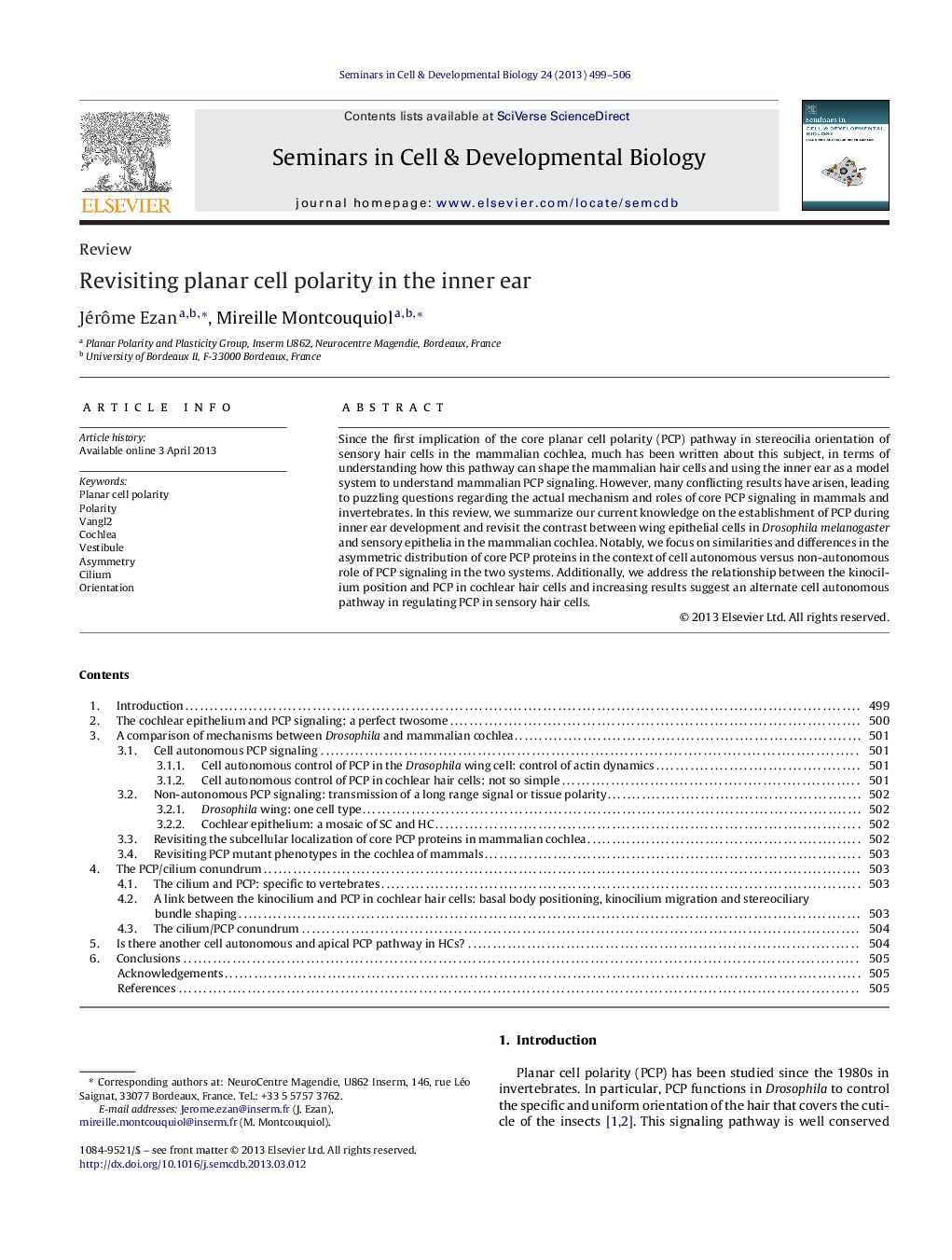| Article ID | Journal | Published Year | Pages | File Type |
|---|---|---|---|---|
| 2202687 | Seminars in Cell & Developmental Biology | 2013 | 8 Pages |
•We review recent findings on PCP establishment in mammalian cochlea.•We revisit the contrast between Drosophila wing epithelium and mammalian cochlear epithelium.•Notably, we focus on similarities and differences in the asymmetric distribution of core PCP proteins.•We address the conundrum between the kinocilium position and hair bundle orientation in cochlear hair cells.•We propose the existence of another cell-autonomous pathway controlling kinocilium positioning in cochlear hair cells.
Since the first implication of the core planar cell polarity (PCP) pathway in stereocilia orientation of sensory hair cells in the mammalian cochlea, much has been written about this subject, in terms of understanding how this pathway can shape the mammalian hair cells and using the inner ear as a model system to understand mammalian PCP signaling. However, many conflicting results have arisen, leading to puzzling questions regarding the actual mechanism and roles of core PCP signaling in mammals and invertebrates. In this review, we summarize our current knowledge on the establishment of PCP during inner ear development and revisit the contrast between wing epithelial cells in Drosophila melanogaster and sensory epithelia in the mammalian cochlea. Notably, we focus on similarities and differences in the asymmetric distribution of core PCP proteins in the context of cell autonomous versus non-autonomous role of PCP signaling in the two systems. Additionally, we address the relationship between the kinocilium position and PCP in cochlear hair cells and increasing results suggest an alternate cell autonomous pathway in regulating PCP in sensory hair cells.
